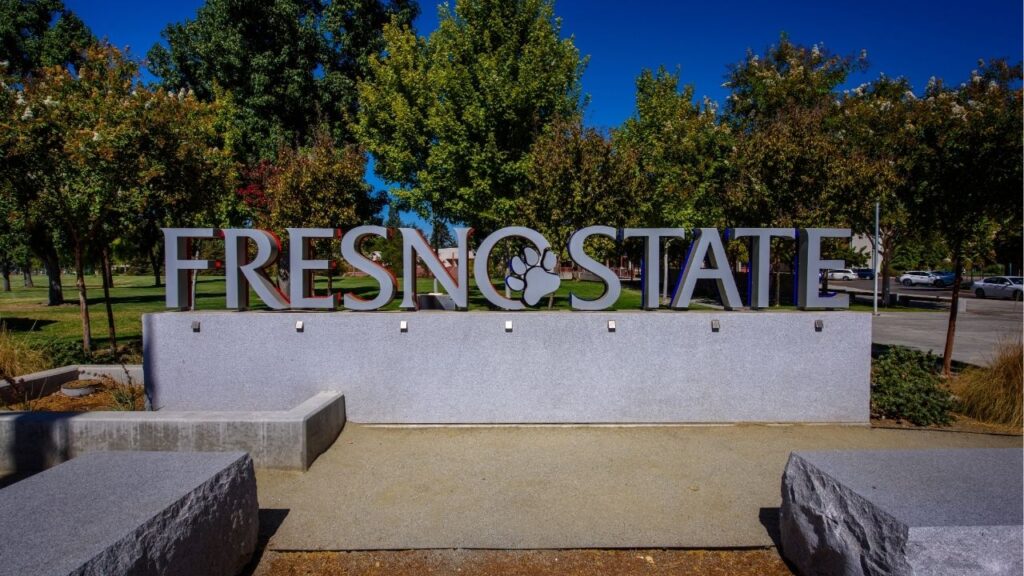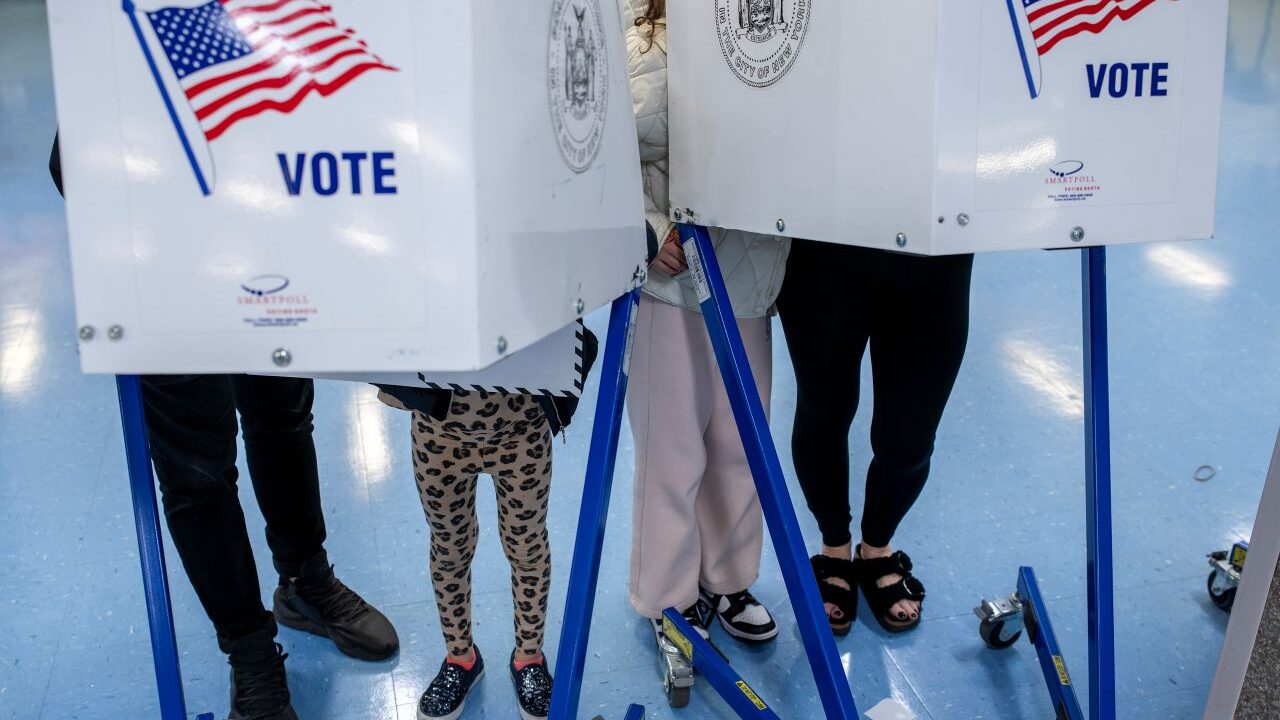Last week, the Supreme Court all but announced how it would rule on the future of the Voting Rights Act of 1965. Under Chief Justice John Roberts, the High Court has been killing it one decision at a time, opines Jamelle Bouie. (Karsten Moran/The New York Times/File)

- Based on the Supreme Court's history under Chief Justice John Roberts, the Voting Rights Act is quite likely dead.
- Roberts and President Trump want to relegate an American republic built on multiracial pluralism to the ash heap of history.
- The case in question is a dispute over the drawing of Louisiana's six congressional districts.
Share
|
Getting your Trinity Audio player ready...
|
Last week, the Supreme Court all but announced how it would rule on the future of the Voting Rights Act of 1965.

Jamelle Bouie
The New York Times
Opinion
The case in question, Louisiana v. Callais, which was heard for the first time in March, is a dispute over the drawing of the state’s six congressional districts. Nearly one-third of Louisianans are Black, but in 2022 state lawmakers drew just one district where those Black voters had a reasonable chance of electing a representative of their choice.
In Louisiana, as is true in much of the Deep South, voting is highly polarized by race. Black people tend to vote for Democrats, white people for Republicans. It’s in this environment that Black voters, a distinct and coherent minority, are shut out of political power unless they constitute a majority — or close to a majority — of a congressional district.
Several individuals as well as groups representing those voters sued under Section 2 of the Voting Rights Act — which ensures fair representation — arguing that the law required the state to draw two congressional districts in which Black voters had the opportunity to elect their preferred candidate.
A federal appeals court sided with the plaintiffs and ordered the Louisiana Legislature to draw a new map with a second majority-Black congressional district, which it did. But this map was challenged by a group of self-described “non-African American” voters, who charged that it was an illegal racial gerrymander. It’s this case that the Supreme Court has decided in essence to hear again, and it is for this case that the court wants the parties to address “whether the state’s intentional creation of a second majority-minority congressional district violates the 14th or 15th Amendments to the U.S. Constitution.”
The Court’s War on the Voting Rights Act
Under the current Supreme Court’s vision of a rigidly colorblind Constitution — indifferent to either racial inequality or the mechanisms of color caste — the answer is very likely to be yes. There is also the matter of Chief Justice John Roberts, who has led the court’s effort to curb, limit and undermine the Voting Rights Act. One assumes that, having gotten the court to strike down one part of the law in 2013, he is eager to get it to strike down another, given his decades-long hostility to the law, which has been in his sights since he was a young lawyer in the Reagan administration.
There is good reason to think that the Roberts court, given its past behavior as well as its established antipathy toward anything that might encumber a state’s ability to shape its electorate, will use this case to conclude its war on the Voting Rights Act with a decision that renders Section 2, and thus the law itself, moot: a toothless nullity to be ignored by those who fear the ballot and the power of a free choice. In doing so, the court would extinguish a law that more than any other made the promise of American democracy a reality.
If by American democracy we mean a pluralistic, multiracial society of political and social equals, then American democracy as we know it began with the signing of the Voting Rights Act of 1965, 60 years ago as of Wednesday.
The immediate effect of the Voting Rights Act was to enfranchise millions of Black Americans living in the South. Turnout in presidential elections for Black voters in the states of the former Confederacy rose from around 25% in 1960 to just over 60% in 1968. Rates of voter registration in states such as Alabama, Georgia and Mississippi doubled (or more than doubled) from 1965 to 1967. And Southern states were, within the next decade, electing Black lawmakers in numbers not seen since Reconstruction.
Subsequent amendments strengthened the law. A 1975 revision introduced a national ban on literacy tests and created new protections for language minorities. A 1982 amendment established that states and localities are liable under the Voting Rights Act if the effect of their policies is to discriminate against voters, regardless of intent. And a 2006 reauthorization — passed overwhelmingly by a Republican-led Congress and signed by a Republican president — extended the core provisions of the Voting Rights Act for another 25 years, at least until the Supreme Court issued its 2013 decision in Shelby County v. Holder, effectively ending preclearance and inaugurating a new era of voter suppression. Since Shelby County, the court has continued to chip away at the law, even going so far as to invert the formula of the 1982 amendment, elevating the intent of the lawmakers over the consequences of their actions. If a legislature did not mean to discriminate (pinkie promise) then, for this Supreme Court, it does not matter that it actually did.
Since their revolution, the French have lived under five republics. The first was overcome by Napoleon. The second, a brief return to republican democracy after decades of monarchy, was trampled by Napoleon’s nephew, Louis Napoleon. The third succumbed to the Nazis and the fourth was overwhelmed by the contradictions inherent in its colonial domination of other peoples. The Fifth Republic, established in 1958, endures.
The Effort to Take Down the Civil Rights Movement
Americans pride ourselves, by contrast, on our undivided history under one Constitution — a single, ongoing experiment in self-government. But look closely at American history and you’ll see that this is an illusion of continuity that belies a reality of change, and sometimes radical transformation, over time. There are several American republics and at least two constitutions, a first and a second founding. Our first republic began with ratification in 1788 and collapsed at Fort Sumter in 1861. Our second emerged from the wreckage of the Civil War and was dismantled, as the University of Connecticut historian Manisha Sinha argues, by Jim Crow at home and imperial ambition abroad. If the third American republic took shape under the unusual circumstances of the middle decades of the 20th century — what Vanderbilt University historian Jefferson Cowie calls “the great exception” of depression, war and a political system indelibly shaped by immigration restriction and the near-total exclusion of millions of American citizens from the political system — then the fourth began with the achievements of the Civil Rights Movement, which included a newly open door to the world.
This was an American republic built on multiracial pluralism. A nation of natives and of immigrants from around the world. Of political parties that strove to represent a diverse cross-section of society. Of a Black president and a future “majority-minority” nation. There was an ugly side — it’s no coincidence that state retrenchment from public goods and services followed the crumbling of racial barriers. But for all its harsh notes and discord, this was the closest the country ever came to the “composite nation” of Frederick Douglass’ aspirations: a United States that served as home to all who might seek the shelter of the Declaration of Independence and its “principles of justice, liberty and perfect humanity equality.”
Clearing the Path for Autocracy
It’s this America that Donald Trump and his movement hope to condemn to the ash heap of history. It’s this America that they’re fighting to destroy with their attacks on immigration, civil rights laws, higher education and the very notion of a pluralistic society of equals.
The Supreme Court’s war on the Voting Rights Act precedes Trump but it is simpatico with his aims. The court’s steady effort to make the law an artifact of the past is of a piece with its broad expansion of executive power for the current president. Both work to undermine the basis for this more politically equal era of American democracy and clear the path to an American autocracy.
But while the Voting Rights Act may be heading to its demise as a functional piece of legislation, it can still stand as a symbol: of our collective capacity to expand the horizons of democratic life; of our creative intelligence in the task of making a more perfect union; and of our ability to confront and overcome the worst of this nation’s past and present.
The Voting Rights Act is quite likely dead. Long live the Voting Rights Act.
This article originally appeared in The New York Times.
By Jamelle Bouie/Karsten Moran
c.2025 The New York Times Company
RELATED TOPICS:
Categories

Washington Sandwich-Thrower Cleared of Assaulting US Agent

Ford Considers Scrapping F-150 EV Truck, WSJ Reports


















